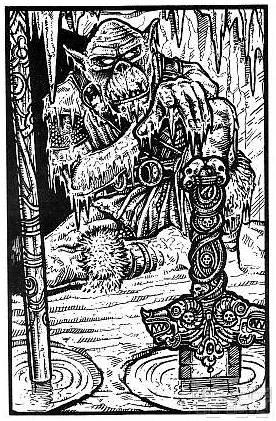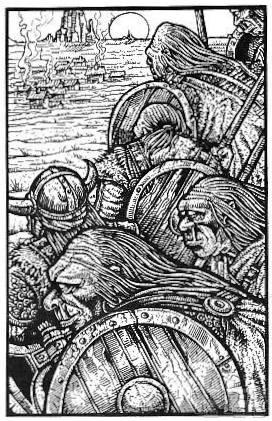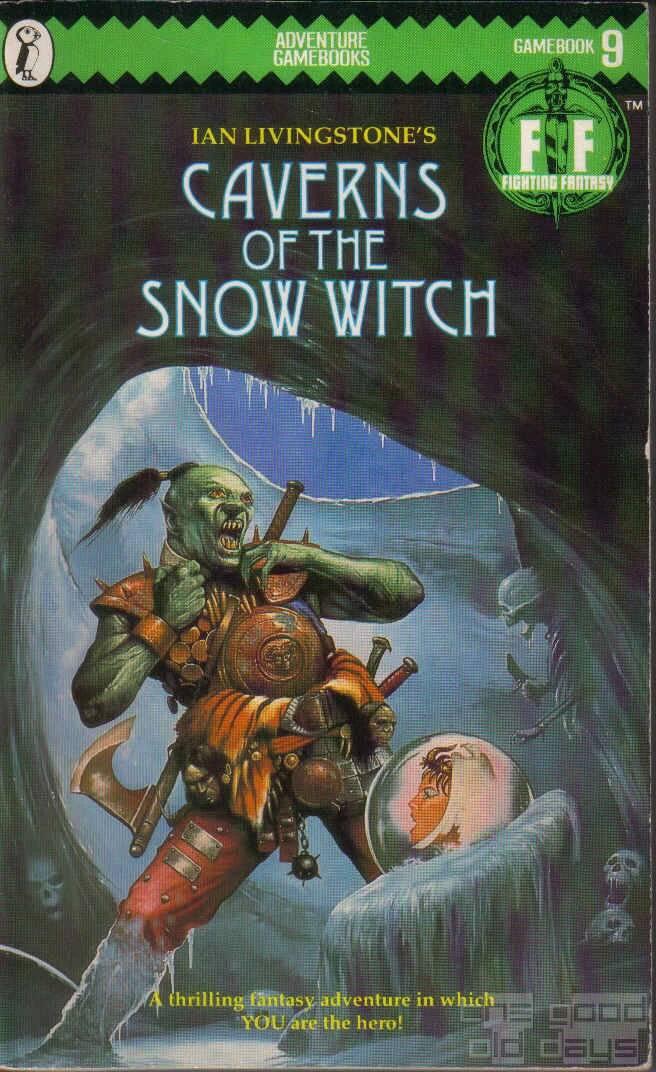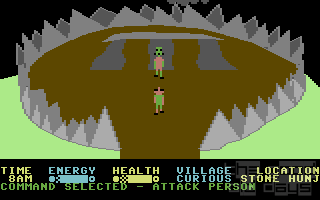The phenomenal success of their Fighting Fantasy line of gamebooks lead Games Workshop to spin out a quarterly magazine on the subject. After republishing the first book in two parts there, the magazine became the host of shorter mini-adventures. The first one of those was Caverns of the Snow Witch in Warlock magazine issue 2. Though on the book front, they also desperately needed fresh material. So it also got published in standalone format – extended to twice its original size.
On a paid mission to kill a yeti threatening the local trade caravans, the player learns of the legendary Snow Witch, resident of the eponymous caverns, plotting great evil. And her vaults being full of treasure. What an opportunity to do some good!

How did author Ian Livingstone go about extending his already existing story for the book version? He made the former finale, dispatching the Snow Witch, into a mid-point and appended a whole new 200 sections of long endgame. At first glance, this doesn't work too badly.
That is because even in its original state, the adventure was already sort of split into two fairly elaborate episodes. First, the yeti hunt through the icy wilderness. Second, infiltrating the caverns and facing off with the Snow Witch. In the book, just when players think they have won, getting all excited about how much gold they may be able to carry, their way out and home turns into a huge problem. A nice spin on the usual dungeon crawling fare which never bothers with this sort of thing.
What the book suffers from, in all its episodes, is poor balancing. Fights against skill 10-12 enemies don't occur just once, and not just on bad paths, but with high regularity and sometimes unavoidably. In this respect, many honest players may not even reach the caverns, the likelihood of being killed before rather high.
On top, there is a huge reliance on luck rolls, an even less interesting mechanic than the tough fights, as well as less explicit choices of luck. Which of the three images of the illusionist to attack? How to beat the Snow Witch at Rock-Paper-Scissors? I'm not kidding.
And, then, there is the book-exclusive material. The above used term of the “long endgame” was applied on purpose here. Usually used in grand strategy computer games, such as Civilization, it implies spending hours and hours even though the outcome is already obvious anyway.

This book is like that, even if first time players will not notice it in their initial attempts (provided they even get that far). The whole escape out of the caverns and the following force march back to civilization is a pure game of attrition, with the final outcome also fully depending on having acquired the correct objects beforehand.
Livingstone devises a mostly linear series of mostly unavoidable encounters which slowly chop off more and more of the player's stats. Until finally (if death doesn't occur earlier) being faced with some climactic trials which are impossible to win unless a certain number of stat points remains. And obviously partially rely on pure luck once again.
The scenario and the writing are not the problem here. The Snow Witch who controls her minions with magical “obedience collars” is a really cool idea within the boundaries of the low fantasy genre. Some of the encounters and creatures are rather interesting as well. Having two companions for some time is a nice touch within this genre which usually is approached “lone wolf” style.
And yet, Livingstone just got lazy when it came devising the book's main challenge. He makes it too hard, and also too hard for the wrong reasons, through bad means. By throwing so much crap at the player that it is almost unimaginable how this one is supposed to be won following the rules. For sure, I never did in my whole life. Neither in the 80s, nor in more recent times. It is painfully apparent that by this point, the author was in assembly line mode.


Comments (1) [Post comment]